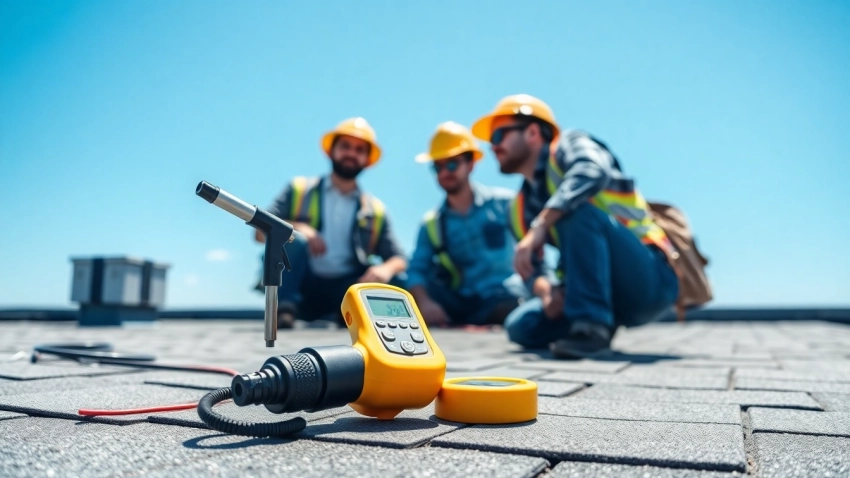
Effective Strategies for Commercial Roof Waterproofing to Enhance Durability
Understanding Commercial Roof Waterproofing
Definition and Importance of Commercial Roof Waterproofing
Commercial roof waterproofing refers to the methods and technologies employed to protect flat and low-sloped roofs from water intrusion. This process is crucial for maintaining the integrity of commercial buildings, as water is one of the primary culprits behind structural damage. Effective waterproofing not only safeguards the physical structure but also contributes to energy efficiency and overall aesthetic appeal. It prevents mold growth, protects insulation, and enhances the lifespan of the roof, making it a vital investment for any property owner. The importance of investing in commercial roof waterproofing cannot be overstated, as it pays off significantly in reduced repair costs and extended usability of the roof.
Common Types of Commercial Roof Waterproofing Systems
There are several types of waterproofing systems used in commercial roofing, each with its unique characteristics, benefits, and ideal applications. Below are some of the most common systems:
- Liquids: Liquid waterproofing involves the application of a liquid membrane that can seamlessly cover the surface of the roof. Upon curing, this forms a durable barrier against water. Common materials include polyurethanes and acrylics.
- Sheet Membranes: These are pre-manufactured sheets made from materials like EPDM (Ethylene Propylene Diene Monomer) or TPO (Thermoplastic Olefin). They are laid out on the roof and sealed at the seams, providing a strong, water-resistant layer.
- Bituminous Membranes: Often made from asphalt, these membranes can be applied in a self-adhesive or torch-applied form. Bituminous systems are known for their longevity and resistance to ultraviolet (UV) rays.
- Green Roofing Systems: This innovative approach involves creating vegetative coverage on the roof. While it offers excellent waterproofing properties, it also requires meticulous planning and maintenance.
Benefits of Investing in Quality Waterproofing
Investing in high-quality waterproofing systems for commercial roofs provides numerous benefits. Here are some noteworthy advantages:
- Prolongs Roof Life: Quality waterproofing extends the lifespan of commercial roofs by protecting them from harsh weather conditions.
- Energy Efficiency: Well-waterproofed roofs contribute to better insulation, reducing energy costs associated with heating and cooling.
- Boosts Property Value: A well-maintained waterproof roof enhances the overall value of the property, making it more attractive to potential buyers or tenants.
- Prevents Mold and Contamination: Effective waterproofing systems reduce the risk of water ingress, which can lead to mold and other atmospheric hazards impacting building occupants’ health.
Challenges in Commercial Roof Waterproofing
Identifying Common Waterproofing Failures
Despite the available technologies and materials, waterproofing failures can still occur. Identifying the common causes of these failures is crucial for effective troubleshooting and prevention:
- Improper Installation: Incorrect application of materials can lead to weak points and gaps, making the roof susceptible to leaks.
- Poor Surface Preparation: Failing to adequately clean and prepare the roof surface before applying waterproofing treatments can hinder adhesion and effectiveness.
- Weather Impact: Extreme weather conditions during installation can compromise waterproofing integrity, particularly with liquid systems.
- Neglected Maintenance: Regular upkeep is essential; without proper inspections and repairs, even the best systems can fail over time.
Environmental Factors Affecting Commercial Roofs
Commercial roofs face a myriad of environmental factors that can impact their waterproofing efficacy. These include:
- UV Radiation: Prolonged exposure to sunlight without adequate protection can degrade waterproofing materials.
- Temperature Variations: Extreme fluctuations in temperature can lead to the expansion and contraction of roofing materials, which can create cracks.
- Rainfall and Snow: Accumulation of water can lead to hydrostatic pressure on roofs not properly designed to handle such loads.
- Pollution and Debris: Environmental pollutants can accumulate on roofs, degrading waterproofing materials and performance over time.
Understanding the Cost Implications of Poor Waterproofing
Neglecting proper waterproofing can lead to significant financial repercussions for commercial property owners. These implications include:
- Repair Costs: Water damage can lead to extensive repairs not only on the roof but also inside the building, impacting infrastructure, electrical systems, and furnishings.
- Increased Insurance Premiums: Frequent claims for water damage may lead to higher insurance costs over time.
- Loss of Revenue: If business operations are interrupted due to roof repairs, potential revenue losses can accumulate.
- Reduced Property Value: Buildings that are perceived as poorly maintained often have lower market value, impacting resale opportunities.
Best Practices for Commercial Roof Waterproofing
Preparation Steps Before Waterproofing
Proper preparation is essential for the success of any waterproofing project. Here are the steps to take before applying waterproofing systems:
- Conduct a Thorough Inspection: Assess the roof’s current condition, identify any existing damage, and determine areas needing repair.
- Clean the Roof Surface: Remove any debris, dirt, and existing coatings to ensure that the waterproofing material adheres properly.
- Repair Existing Damage: Fill cracks, replace damaged membrane sections, and rectify any deficiencies that could compromise the waterproofing.
- Assess Drainage: Ensure that drainage systems are effective and do not pose a risk of water accumulation.
Choosing the Right Waterproofing Material
Selecting the appropriate waterproofing material is critical to long-term success. Factors to consider include:
- Roof Type: Ensure that the chosen material is compatible with the specific type of roofing system in place.
- Environmental Conditions: Consider local climate and weather conditions which could affect material performance.
- Performance Specifications: Look for waterproofing materials that meet your specific durability, flexibility, and UV resistance needs.
- Cost vs. Value: While it’s tempting to opt for the cheapest options, consider the long-term value and potential savings from fewer repairs.
Key Installation Techniques for Longevity
Installation techniques play a significant role in the effectiveness of waterproofing systems. Key strategies to enhance longevity include:
- Apply in Optimal Conditions: Ensure that temperatures and humidity levels are within recommended ranges during application.
- Follow Manufacturer Instructions: Each waterproofing product will have specific application guidelines; adherence is crucial for achieving intended performance.
- Ensure Seam Integrity: Whether using sheets or liquid, ensure that all seams are properly sealed to prevent leaks.
- Perform Quality Control Checks: Post-installation inspections can catch any mistakes early before they become bigger problems.
Maintaining Commercial Roof Waterproofing
Regular Inspection Routines and Checklists
Routine inspections are essential for maintaining the integrity of waterproofing systems. Develop a comprehensive inspection checklist that includes the following:
- Checking for signs of wear, such as cracks and bubbles in the waterproofing membrane.
- Inspecting drains and gutters for blockages or debris that may lead to water accumulation.
- Ensuring that penetrations and flashings are secure and well-sealed.
- Identifying any vegetation growth, as this can compromise waterproofing effectiveness.
Addressing Repairs and Treatments Promptly
Promptly addressing any detected issues is paramount to sustaining the waterproofing system’s reliability. Examples of immediate actions include:
- Repairing small cracks as soon as they are discovered to prevent further deterioration.
- Re-sealing seams that show signs of wear or allowing moisture ingress.
- Removing debris quickly to maintain proper drainage pathways.
- Scheduling professional assessments regularly to identify less obvious problems.
Seasonal Maintenance Tips for Commercial Roofs
Each season presents unique challenges for maintaining commercial roofs. Here are tailored tips for effective year-round care:
- Spring: After winter snow and ice have melted, clear away debris accumulations and inspect for any damage caused by ice dam formation.
- Summer: Regularly check flashings and seams for UV damage. Consider applying a protective coating for added UV resistance.
- Fall: Clean gutters and downspouts to prepare for heavy rainfall and ensure proper drainage.
- Winter: Monitor for ice accumulation and remove snow as needed to prevent added weight and pressure on the roof.
Evaluating the Effectiveness of Commercial Roof Waterproofing
Performance Metrics for Roof Waterproofing
To ensure that a commercial roof waterproofing system is effective, regularly evaluate its performance through various metrics:
- Leak Records: Keep a detailed record of any leaks that occur post-installation; continual leaks indicate problems with the system.
- Energy Bill Analysis: Monitor energy costs for signs of inefficiency that could suggest insulation or waterproofing issues.
- Inspection Results: Regular inspections should yield data on the condition of the waterproofing system, revealing areas that may need attention.
- Tenant Feedback: Input from building occupants on humidity and comfort levels can also indicate the effectiveness of waterproofing.
Case Studies of Successful Waterproofing Projects
Exploring case studies can provide valuable insights into successful commercial roof waterproofing implementations:
- Retail Store Roof Restoration: A major retail chain opted to upgrade its roof waterproofing with a seamless liquid system that significantly reduced leaks and improved energy efficiency.
- Warehouse Roof Replacement: A distribution center replaced its outdated bituminous roof with a TPO system, achieving a cool roof certification that enhanced sustainability and reduced cooling costs.
- Office Building Green Roof Installation: An office building installed a green roofing system, which not only waterproofed the roof but also improved building aesthetics and reduced the urban heat island effect.
Future Trends in Commercial Roof Waterproofing Technologies
The future of commercial roof waterproofing promises innovative technologies and methodologies:
- Smart Materials: The incorporation of smart technologies into waterproofing materials will allow real-time monitoring of performance and potential issues.
- Sustainable Solutions: An increasing emphasis on eco-friendly materials and practices will drive the development of greener roofing solutions, including recycled materials and reduced chemical usage.
- Enhanced Application Methods: Advances in application techniques, such as robotic automation for difficult-to-reach areas, will improve the precision and efficiency of waterproofing installations.




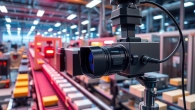
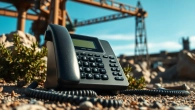

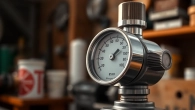
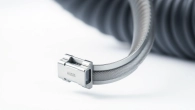



Leave a Reply